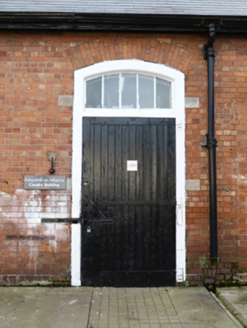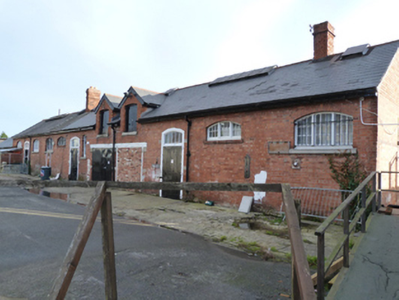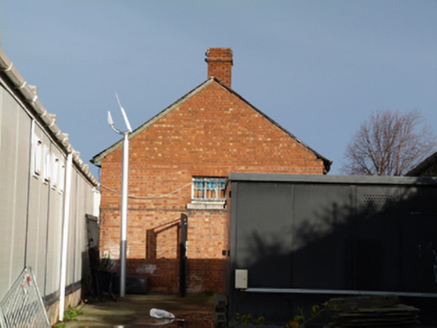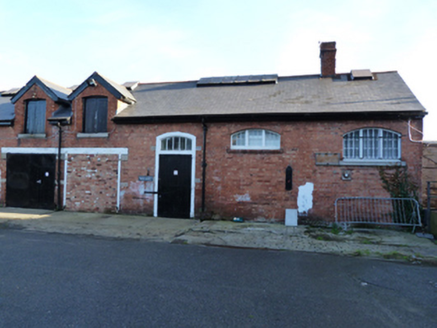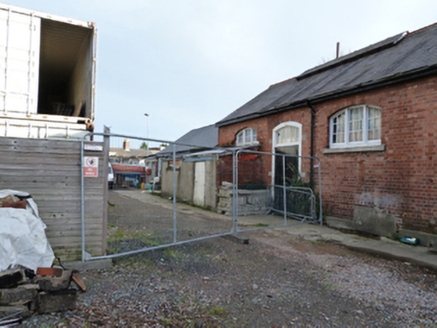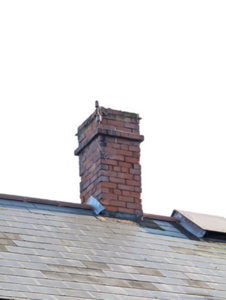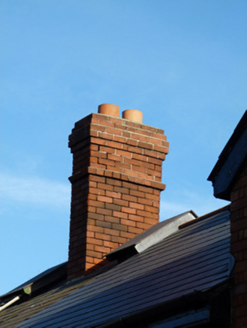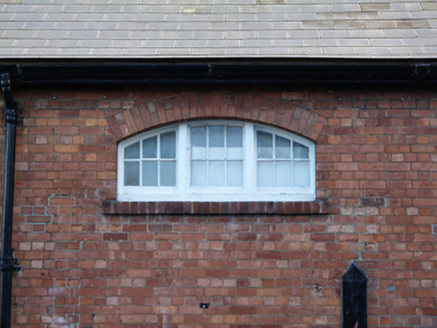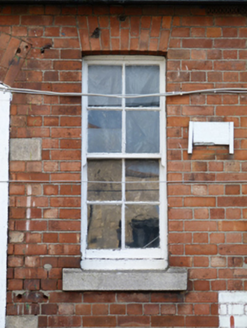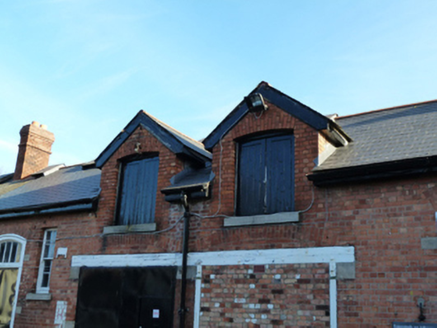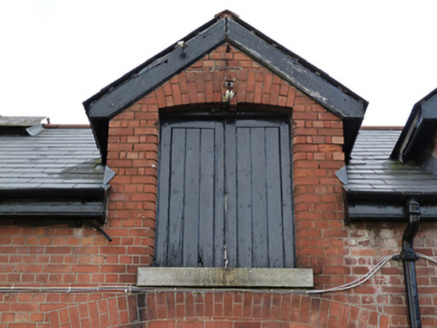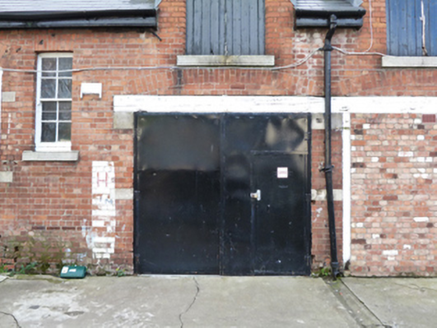Survey Data
Reg No
50080980
Rating
Regional
Categories of Special Interest
Architectural, Historical, Social
Previous Name
Griffith Barracks / Wellington Barracks
Original Use
Barracks
In Use As
Outbuilding
Date
1880 - 1900
Coordinates
314856, 232519
Date Recorded
02/01/2014
Date Updated
--/--/--
Description
Freestanding twelve-bay single-storey with half-dormer attic former stables, built c.1890, with gabled dormers to loft and lower single-storey lean-to extension to north end of front (west) elevation. Pitched artificial slate roof having red brick chimneystacks and cast-iron rainwater goods. Red brick walls laid in Flemish bond. Segmental-headed window openings with red brick voussoirs and reveals, some red brick sills, some granite sills, tripartite windows with timber mullions, some having wrought-iron security bars. Square-headed window openings with red brick voussoirs and reveals, granite sills and four-over-four pane timber sash windows. Segmental-headed door openings with rendered reveals, timber battened door with strap hinges and overlight. Square-headed carriage openings with timber lintel, red brick relieving arches, and sheet metal sliding doors. One opening blocked. Square-headed openings with brick voussoirs and reveals, granite sills and timber shutters set within gabled dormers. Cobbled yard with drainage channels to front.
Appraisal
The Richmond Bridewell was designed by Francis Johnston and construction began in the second decade of the nineteenth century. It was remodelled to accommodate a military function in the late nineteenth century and this stables, known as the cavalry building, was constructed after the bridewell was commandeered by the War Department and converted into Wellington Barracks. It is a well-built red brick building and its architectural style is typical of military buildings built throughout the British Empire at the time. The blank street elevation of the tall boundary wall is typical of the complex's original function. Éamon De Valera and other prisoners were reputedly held in a guardhouse at this barracks following their arrest in 1916.
